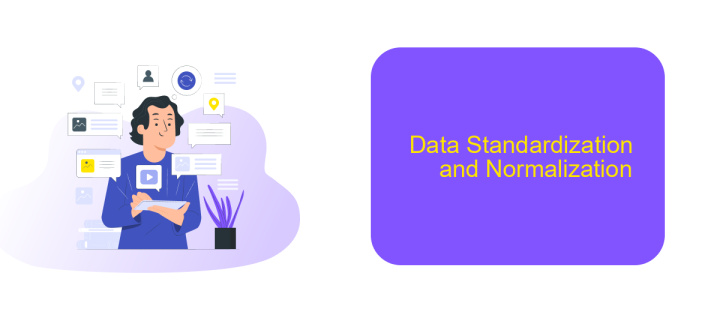Data Transformation in ETL Process
Data transformation is a crucial step in the ETL (Extract, Transform, Load) process, ensuring data is converted into a suitable format for analysis and reporting. This article delves into the importance of data transformation, exploring various techniques and best practices that help organizations maintain data integrity, improve accuracy, and enhance overall decision-making capabilities.
Introduction to Data Transformation in ETL Process
Data transformation is a critical phase in the ETL (Extract, Transform, Load) process, responsible for converting raw data into a format suitable for analysis and reporting. This step ensures that data from various sources is standardized, cleansed, and enriched to meet the specific needs of an organization. Effective data transformation can significantly enhance data quality and usability, making it a cornerstone of any data integration strategy.
- Data Cleansing: Removing inaccuracies and inconsistencies to ensure data quality.
- Data Standardization: Converting data into a common format to facilitate seamless integration.
- Data Enrichment: Adding additional information to enhance the dataset's value.
- Data Aggregation: Summarizing data to provide a comprehensive overview.
Modern tools and services, such as ApiX-Drive, simplify the data transformation process by automating many of these tasks. ApiX-Drive helps organizations integrate various data sources effortlessly, ensuring that data is accurately transformed and ready for analysis. By leveraging such tools, businesses can focus on deriving insights rather than managing the complexities of data transformation.
Understanding Data Transformation Techniques

Data transformation is a crucial step in the ETL (Extract, Transform, Load) process, as it involves converting data from its original format into a format that can be easily analyzed and utilized. This step includes various techniques such as data cleaning, data normalization, data aggregation, and data enrichment. Data cleaning involves removing errors and inconsistencies, ensuring that the data is accurate and reliable. Normalization restructures data to reduce redundancy and improve efficiency. Aggregation combines multiple pieces of data to provide a summary, while enrichment enhances the data by adding additional information from external sources.
Effective data transformation requires the use of specialized tools and services. For instance, ApiX-Drive offers robust solutions for automating data integration and transformation processes. This service allows users to set up integrations between different applications and platforms without needing extensive technical knowledge. By leveraging such tools, organizations can streamline their ETL processes, ensuring that data is transformed accurately and efficiently, ultimately leading to better decision-making and insights.
Data Validation and Cleaning during Transformation

Data validation and cleaning are critical steps during the transformation phase of the ETL process. Ensuring that the data is accurate, consistent, and free from errors is essential for reliable analysis and decision-making. This phase involves identifying and correcting inaccuracies, inconsistencies, and redundancies in the data.
- Identify and remove duplicate records to avoid redundancy.
- Validate data types and formats to ensure consistency.
- Check for missing values and fill or remove them appropriately.
- Standardize data to maintain uniformity across datasets.
- Implement business rules to validate data against predefined criteria.
Using tools like ApiX-Drive can streamline the data validation and cleaning process by automating data integration and transformation tasks. ApiX-Drive facilitates seamless integration between various data sources, ensuring that the data is consistently validated and cleaned before it is loaded into the target system. This automation reduces manual effort, minimizes errors, and enhances the overall efficiency of the ETL process.
Data Standardization and Normalization

Data standardization and normalization are critical steps in the ETL (Extract, Transform, Load) process that ensure consistency and accuracy. Standardization involves converting data into a common format, making it easier to analyze and compare. Normalization, on the other hand, organizes data to reduce redundancy and improve integrity.
Implementing these processes effectively requires a clear understanding of the data sources and the desired output. Tools like ApiX-Drive can facilitate data standardization and normalization by automating the integration and transformation of data from various sources, ensuring that it meets the required standards.
- Standardization: Converting different date formats into a single format.
- Normalization: Structuring data to eliminate duplication.
- Automation: Using tools like ApiX-Drive to streamline data transformation.
By employing data standardization and normalization, organizations can achieve higher data quality and reliability. This not only enhances decision-making but also improves operational efficiency. Utilizing automation tools further simplifies these processes, allowing for more accurate and timely data integration.


Applying Data Transformation in ETL Pipelines
Data transformation in ETL pipelines is crucial for converting raw data into a meaningful format suitable for analysis. This process involves several steps, including data cleaning, normalization, and enrichment. Data cleaning removes inconsistencies and errors, ensuring the data is accurate. Normalization standardizes data formats, making it easier to integrate from multiple sources. Enrichment adds valuable information to the dataset, enhancing its utility for decision-making.
Implementing data transformation effectively requires robust tools and services. ApiX-Drive, for example, offers seamless integration capabilities that simplify the data transformation process. By automating data flows between various applications, ApiX-Drive ensures that data is consistently formatted and enriched without manual intervention. This not only saves time but also reduces the risk of errors, making it an excellent choice for organizations looking to optimize their ETL pipelines.
FAQ
What is data transformation in the ETL process?
Why is data transformation important in ETL?
What are some common data transformation techniques?
How can I automate data transformation in my ETL process?
What challenges might I face during data transformation?
Routine tasks take a lot of time from employees? Do they burn out, do not have enough working day for the main duties and important things? Do you understand that the only way out of this situation in modern realities is automation? Try Apix-Drive for free and make sure that the online connector in 5 minutes of setting up integration will remove a significant part of the routine from your life and free up time for you and your employees.

